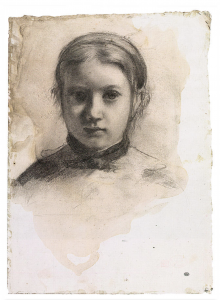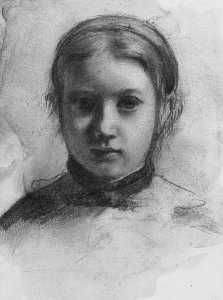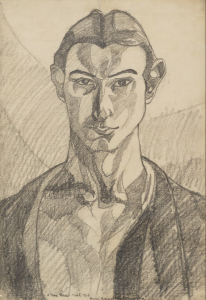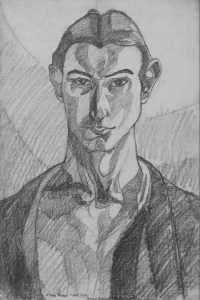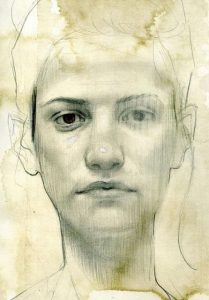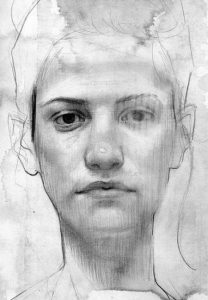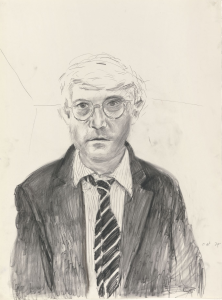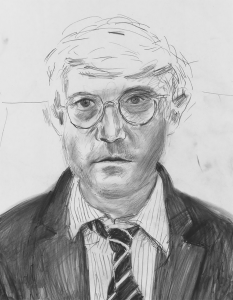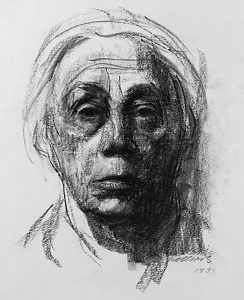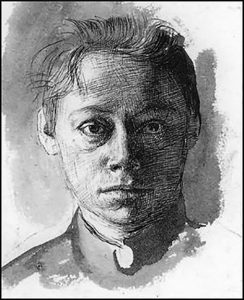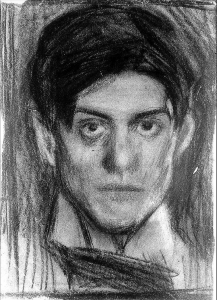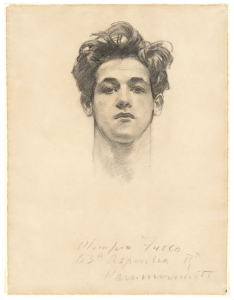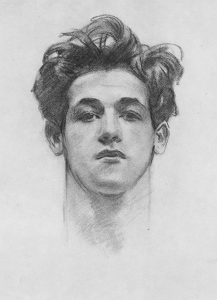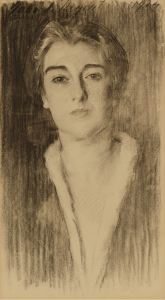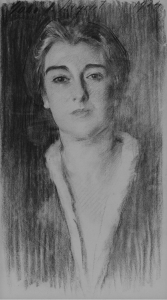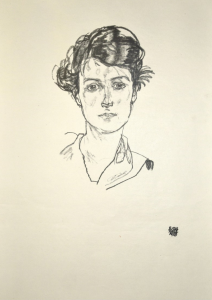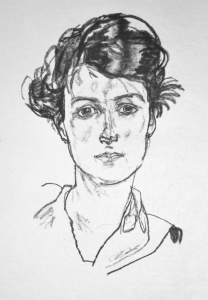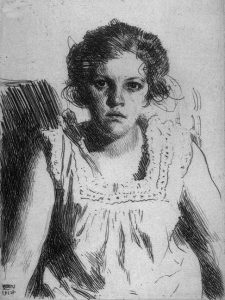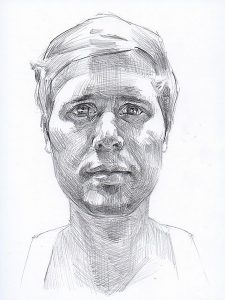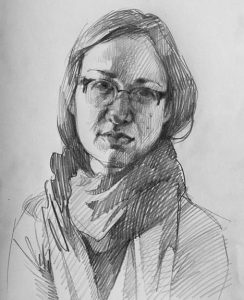Please choose one of the following for your Drawing from Another Artist drawing. Instructions are under Fourth Assignment / Portrait Drawing, Part 1.
There are 15 drawings here to choose from, with sitters of all genders and ages. Be sure to scroll through all of them before choosing. You’re also welcome to choose one of your own, as long as it’s a frontal view, like these, and with my approval before you start drawing.
Notes:
I’ve included reproductions in the original proportion, color, and condition, for your information, but make your copy from the cropped black and white version just below them, using that composition rather than the original, at the size indicated, centered on your paper.
Ignore any tones in the ground (background), which are due to toned paper or a poor exposure; your ground should be white.
Edgar Degas. This is the younger girl from the Bellelli family portrait that we looked at earlier this semester.
Draw from the one below, at the size shown, centered on your paper, and use this cropping rather than the original.
Disregard the stains (that is, don’t draw them).
Edgar Degas / 8.75 x 6.5 inches
Another Degas.
Edgar Degas / 9 x 5.75 inches
Draw from this one using the dimensions shown, noting the delicacy, fine touch, and limited value range of this drawing. Hold the pencil loosely and far back, as we did last week, allowing just the weight of the pencil and only a bit more pressure from you to make the marks.
Henri Gaudier-Brzeska
The softer, wider lines in the hatching are made by using a wood pencil at a low angle, on the side of the point rather than the point itself. Note this artist’s use of shadow mapping to outline the shapes of shadows and then fill them in with hatching. Note too the various resolutions in the hatching, from finer in the portrait to bolder in the background.
Gaudier-Brzeska died in WWI at the age of 23, ending what promised to be a very important career as a sculptor. Director Ken Russell made a well-received bio-pic about him called Savage Messiah, which also featured a very young Helen Mirren.
H. Craig Hanna
H. Craig Hanna / 9 x 6.25 inches
For this drawing you’re permitted to smudge the pencil for the undertone in the values, as he has–subtly–but note that there’s a fine vertical hatching on top of them to restore his autographic marks and improve the complexion of the drawing.
This drawing likewise uses smudged tones in the under-drawing to create a foundation of value (look for the grey tones under the hatching), but Hockney uses pencil hatching over them. Compose yours like the one here, not the original shown above.
Kathe Kollwitz
Kathe Kollwitz / 8 x 6.5 inches
Another drawing where you’ll need a wooden pencil and the broad side of the pencil point (with selected touches from the point for the finer lines). If you have a 6B or Ebony pencil, even better, or a charcoal stick (if you have one and are willing to use it at home).
Also Kollwitz / 8 x 6.5 inches
Another self-portrait, from when she was much younger. You’re free to try the ink washes if you’re using drawing paper (or better yet watercolor paper), but you’re also free to ignore them or render them with the pencil (using hatching).
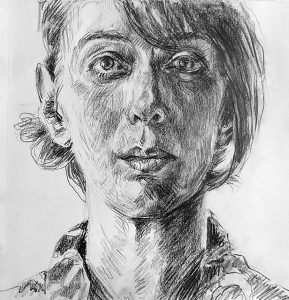 Mariah O’Neill / 6.75 x 6.5 inches
Mariah O’Neill / 6.75 x 6.5 inches
In art dimensions, height precedes width, so this is 6.75 inches high and 6.5 inches wide.
I see very minimal smudging in selected areas of the right side (the shadow side), as part of the underdrawing (after the schematic but before the hatching)–look for the grey tones under the hatching–but keep them light and and minimal as she has. Note again how hatching over smudging restores the artist’s hand and the orientation of the planes.
Picasso / 9 x 6.5 inches
Most definitely one for the broad side of the pencil point (using a wooden pencil rather than a mechanical pencil). Once again also combining general tones that are smudged and hatching over them to brighten the surface.
John Singer Sargent
Sargent / 9 x 6.5 inches
Another one with minimal smudging (look for the grey tones under the hatching). Compose it as shown here, not in the original, shown above.
John Singer Sargent
Sargent / 9 x 5 inches
Definitely one for the broad side of the pencil point (wooden pencil). Some signs of preliminary smudging beneath the shadows in the under-drawing (after the schematic but before the hatching), but also sharper thinner lines drawn with the point.
Schiele / 9 x 6.25 inches
Use the cropping in the black and white, not in the original. Draw this with the point slightly turned on its side for those softer, wider lines.
Anders Zorn / 9 x 6.75 inches
This is actually an etching. Our nearest equivalent is a fine point pen. You could go after it directly with the pen (marking out the drawing with dots) or do a pencil under-drawing before hatching and then erasing it when the ink is dry–very dry. Notice the relative absence of contours and the way he allows hatching alone (i.e., value) to describe the forms.
Anonymous Internet Artist #1 / 9 x 6.75 inches
Straight pencil hatching, no smudging. You might want to practice your ability to lay down firmly drawn, equally spaced hatching for this one. Be very attentive to the direction of each patch of hatches.
Anonymous Internet Artist #2 / 8 x 6.5 inches
Same comment as the one above about the need for hatching warm-ups.
